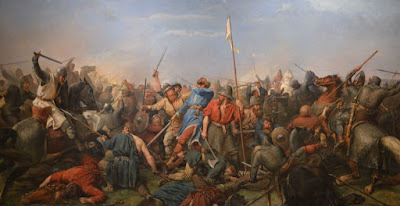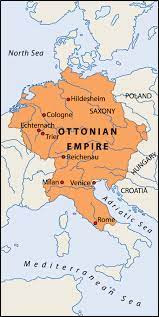She was born on 25 March 1347 as Caterina di Jacopo di Benincasa, and survived the imminent Black Death that was about to ravage Europe. A happy child, she had a vision of Christ with Peter, Paul, and John when she was only five or six, and decided shortly after to devote herself to God.
This was not her parents' plan for her, however, and at 16 they wanted her to marry the widower of a sister who had died in childbirth. Catherine cut off her hair and started fasting to show her opposition to this plan and to make herself less attractive to a husband.
Quiet rebellion won out, and eventually her father relented and allowed her to choose her own life's path. She would later advise Raymond of Capua how to manage adversity: "Build a cell inside your mind, from which you can never flee." In her imagination, she pictured her father as Christ, her mother as Mary, her siblings as apostles. She treated them with respect and used this approach as a path to spiritual growth.
After she had a vision of St. Dominic she expressed a desire to join the Dominicans; this upset her mother, who tried ways to change her mind, but eventually allowed her to join a local group of devout laywomen, the Mantellate Sisters, a third order devoted to the education of youth and caring for the ill and poor. They taught Catherine to read. She still lived with her family, but seemed to have taken a personal vow of silence. Also, she would give away food and clothing, upsetting her family.
At 21, she had a vision which she described as a mystical marriage to Christ (pictured above by Giovanni di Paolo, 1400s). She claimed that she received a wedding ring during this vision, but not a typical ring, rather Christ's foreskin from the time of his circumcison when he was eight days old. (She would claim that she wore this ring, but it was invisible.) During this vision, Christ told her to give up her quiet life at home and go into the world. She became more active in her charity, helping the ill or poor in hospitals or homes.
Eventually, Siena became too small a venue for her desire to do good works, and she started getting involved in much larger issues. What she did, and how she even fixed a "problem" with the papacy, we will talk about tomorrow.



























